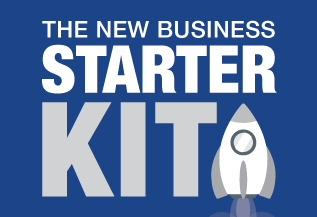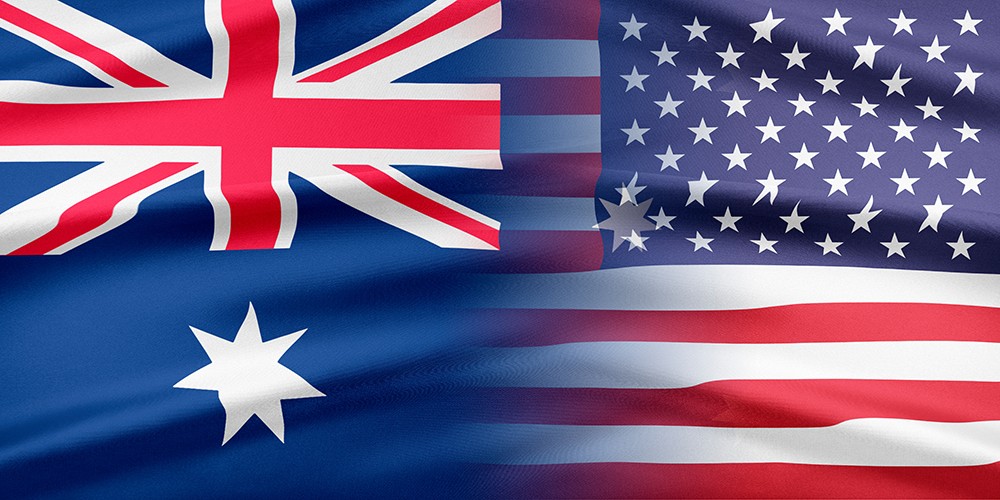JobKeeper Programme_408x408a.png)
The Government have announced a ‘Job Keeper’ Program that provides wage subsidy payments to Australian businesses who have seen their turnover reduce significantly as a result of the coronavirus. Registered employers will receive a flat $1,500 each fortnight for each eligible employee, including those that have been stood down or recently rehired.
Eligible businesses will be able to claim a fortnightly payment of $1,500 per eligible employee from 30 March 2020, for a maximum period of 6 months. Payments will be backdated to March 30 and begin being paid in the first week of May.
If an employee usually earns more than that amount, the employer can choose top up their wage payment. It is also up to the employer whether they want to continue to make superannuation payments.
It’s worth noting that employers are under a legal obligation to pass the payments on to their employees. The subsidy is specifically intended to keep employees in work, not to boost the bank balances of businesses themselves, and the ATO will enforce this.
The JobKeeper Payment legislation has not been passed into law by Parliament. Once the Tax Office has finalised the eligibility criteria we will contact you again (probably mid next week) to assist you in applying the Stimulus Packages and the JobKeeper Payments to your business circumstances.
ELIGIBLE EMPLOYERS include:.jpg)
- a business with a turnover of less than $1 billion and their turnover will reduce by more than 30 per cent relative to a comparable period a year ago (of at least a month); or
- a business with a turnover of $1 billion or more and their turnover will be reduced by more than 50 per cent relative to a comparable period a year ago (of at least a month); and
- the business is not subject to the Major Bank Levy.
 To establish that a business has faced either a 30 (or 50) per cent fall in their turnover, most businesses would be expected to establish
that their turnover has fallen in the relevant month or three months (depending on the natural activity statement reporting period of that
business) relative to their turnover a year earlier. Where a business was not in operation a year earlier, or where their turnover a year
earlier was not representative of their usual or average turnover, (e.g. because there was a large interim acquisition, they were newly
established or their turnover is typically highly variable) the Tax Commissioner will have discretion to consider additional information
that the business can provide to establish that they have been significantly affected by the impacts of the Coronavirus. The Tax
Commissioner will also have discretion to set out alternative tests that would establish eligibility in specific circumstances (e.g.
eligibility may be established as soon as a business has ceased or significantly curtailed its operations). There will be some tolerance
where employers, in good faith, estimate a greater than 30 (or 50) per cent fall in turnover but actually experience a slightly smaller
fall.
To establish that a business has faced either a 30 (or 50) per cent fall in their turnover, most businesses would be expected to establish
that their turnover has fallen in the relevant month or three months (depending on the natural activity statement reporting period of that
business) relative to their turnover a year earlier. Where a business was not in operation a year earlier, or where their turnover a year
earlier was not representative of their usual or average turnover, (e.g. because there was a large interim acquisition, they were newly
established or their turnover is typically highly variable) the Tax Commissioner will have discretion to consider additional information
that the business can provide to establish that they have been significantly affected by the impacts of the Coronavirus. The Tax
Commissioner will also have discretion to set out alternative tests that would establish eligibility in specific circumstances (e.g.
eligibility may be established as soon as a business has ceased or significantly curtailed its operations). There will be some tolerance
where employers, in good faith, estimate a greater than 30 (or 50) per cent fall in turnover but actually experience a slightly smaller
fall.
Note, the employer must have been in an employment relationship with eligible employees as at 1 March 1, 2020 and confirm that each eligible employee is currently engaged in order to receive Job Keeper Payments. Not-for-profit entities (including charities) and self-employed individuals (businesses without employees) that meet the turnover tests that apply to businesses are also eligible to apply for Job Keeper Payments.
ELIGIBLE EMPLOYEES are employees who:
- are currently employed by the eligible employer (including those stood down or re-hired);
- were employed by the employer at 1 March 2020;
-
are full-time, part-time, or long-term casuals (a casual employed on a regular basis for longer than 12 months as at 1 March 2020);

- are at least 16 years of age;
- are an Australian citizen, the holder of a permanent visa, a Protected Special Category Visa Holder, a non-protected Special Category Visa Holder who has been residing continually in Australia for 10 years or more, or a Special Category (Subclass 444) Visa Holder; and
- are not in receipt of a Job Keeper Payment from another employer.
If your employees receive the Job Keeper Payment, this may affect their eligibility for payments from Services Australia as they must report their Job Keeper Payment as income.
Eligible employers will have access to $1,500 fortnightly (before tax) payments for each full-time or part-time staff member on their books. For employees that were already receiving this amount from their employer then their income will not change. For employees that have been receiving less than the $1500 gross per fortnight, the employer will need to top up the payment to the employee up to $1,500 (before tax).
The Australian Tax Office (ATO) will administer the Job Keeper scheme and has begun taking expression of interests from employers through its website. They will oversee the program using data from the single touch payroll system.
- Must be paid two fortnights within 30th March to 26th April, minimum $1,500 each fortnight or minimum $3,000 during four week period.
- Important – Employee is NOT eligible for JobKeeper $1,500 government subsidy if they do not meet April $3,000 test wages threshold.
Application Process
We will be able to lodge your applications starting 20th April, therefore please download our questionnaire PDF version or Word Version) to be completed and provided to our office with the JobKeeper Employee Nomination Notice form should you wish our office to process your application.
Upon emailing these to us, we will then contact and discuss how to ensure you do not miss out of the JobKeeper $1,500/fn payment per fortnight per eligible employee
OBLIGATIONS ON EMPLOYERS.jpg)
To receive the Job Keeper Payment, employers must:
- Initially, employers can register their interest in applying for the Job Keeper Payment via ato.gov.au from 30 March 2020. Subsequently, eligible employers will be able to apply for the scheme by means of an online application.
- Register an intention to apply on the ATO website and assess that they have or will experience the required turnover decline.
- Provide information to the ATO on eligible employees - This includes information on the number of eligible employees engaged as at 1 March 2020 and those currently employed by the business (including those stood down or re-hired). For most businesses, the ATO will use Single Touch Payroll data to pre-populate the employee details for the business.
- Ensure that each eligible employee receives at least $1,500 per fortnight (before tax) - For employees that were already receiving this amount from the employer then their income will not change. For employees that have been receiving less than this amount, the employer will need to top up the payment to the employee up to $1,500, before tax. And for those employees earning more than this amount, the employer is able to provide them with a top-up.
- It will be up to the employer if they want to pay superannuation on any additional wage paid because of the Job Keeper Payment.
- Notify all eligible employees that they are receiving the Job Keeper Payment.
- Continue to provide information to the ATO on a monthly basis, including the number of eligible employees employed by the business.
.jpg) SELF
EMPLOYED
- businesses without employees, such as the self-employed, can register their interest in applying for Job Keeper Payment via ato.gov.au
from 30 March 2020. They will need to provide an ABN for their business, nominate an individual to receive the payment and provide that
individual’s Tax File Number and provide a declaration as to recent business activity. They will need to provide a monthly update to the
ATO to declare their continued eligibility for the payments. Payment will be made monthly to the individual’s bank account.
SELF
EMPLOYED
- businesses without employees, such as the self-employed, can register their interest in applying for Job Keeper Payment via ato.gov.au
from 30 March 2020. They will need to provide an ABN for their business, nominate an individual to receive the payment and provide that
individual’s Tax File Number and provide a declaration as to recent business activity. They will need to provide a monthly update to the
ATO to declare their continued eligibility for the payments. Payment will be made monthly to the individual’s bank account.
EXAMPLE 1 Business Still Operating
Greg runs a real estate agency with two employees. The business is still operating at this stage, but Greg expects that turnover will decline by more than 30% in in the coming months. The employees both continue to work in the business.
- Mary is a permanent full-time employee on a salary of $3,000 per fortnight before tax
- Tom who is a permanent part-time employee on a salary of $1,000 per fortnight before tax
.jpg) Greg
is eligible to receive the Job Keeper Payment for each employee. The business continues to pay Mary her full-time salary of $3,000 per
fortnight before tax and the business will receive $1,500 per fortnight from the Job Keeper Payment to subsidise the cost of Mary’s salary
and will continue paying the superannuation guarantee on Mary’s income.
Greg
is eligible to receive the Job Keeper Payment for each employee. The business continues to pay Mary her full-time salary of $3,000 per
fortnight before tax and the business will receive $1,500 per fortnight from the Job Keeper Payment to subsidise the cost of Mary’s salary
and will continue paying the superannuation guarantee on Mary’s income.
The business continues to pay Tom his salary of $1,000 per fortnight before tax and an additional $500 per fortnight before tax, totalling $1,500 per fortnight before tax. The business receives $1,500 per fortnight from the Job Keeper Payment which will subsidise the cost of Tom’s salary. The business must continue to pay the Superannuation Guarantee on the $1,000 per fortnight of wages that Tom is earning. The business has the option of paying superannuation on the additional $500 (before tax) paid to Tom under the Job Keeper Payment.
EXAMPLE 2 Employer with employees who have been stood down without pay.
.jpg) Sarah runs a
gymnasium and employs three permanent part-time personal trainers, but the government has forced her to close the doors. As such, she has
been forced to stand down her three personal trainers without pay.
Sarah runs a
gymnasium and employs three permanent part-time personal trainers, but the government has forced her to close the doors. As such, she has
been forced to stand down her three personal trainers without pay.
Sarah’s turnover will decline by more than 30 per cent, so she is eligible to apply for the Job Keeper Payment for each employee and pass on $1,500 per fortnight (before tax) to each of her three employees for up to six months. Sarah will maintain the connection to her employees and be in a position to resume trading down the track.
Sarah is required to advise her employees that she has nominated them as eligible employees to receive the payment. It is up to Sarah whether she wants to pay superannuation on the additional income paid because of the Job Keeper Payment. If Sarah’s employees have already started receiving income support payments like the Job Seeker Payment when they receive the Job Keeper Payment, they will need to advise Services Australia of their new income.
More information:-
- Supporting Businesses to Retain Jobs Fact Sheet
- JobKeeper Payment - Information for Employers
- JobKeeper Payment - Information for Employees




.png)










